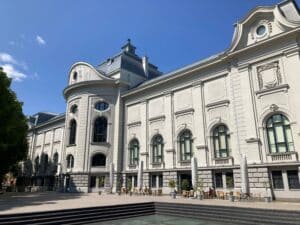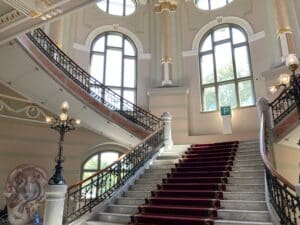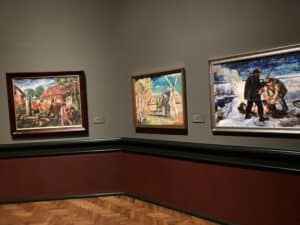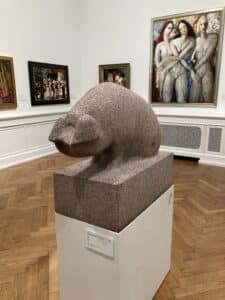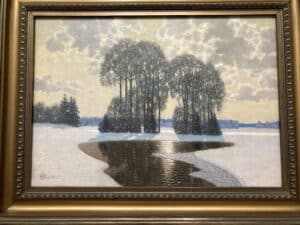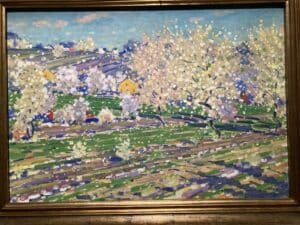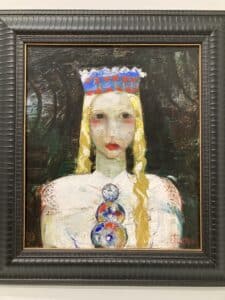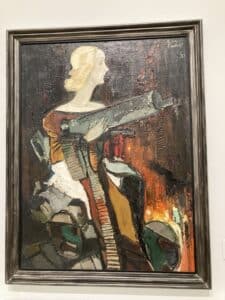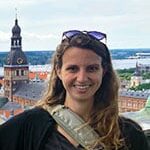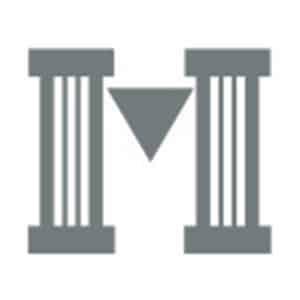The Latvian National Museum of Art is one of Riga’s oldest and best known art museums. Its permanent collections focus specifically on Latvia’s own national artists and on telling the story of the development of art in Latvia. It also rotates temporary exhibitions that can introduce you to even more striking and more recent Latvian art. With low-priced admission and accessible, free audio guides, the Latvian National Museum of Art provides a welcoming and informative overview of Latvia’s history and the pride that Riga takes in being a cultural center. Also in its favor is the fact that it does not seem to get very crowded.
Overview of the Museum Structure
The Latvian National Museum of Art (LNMM for its initials in Latvian) is actually a network of museums in Riga, which includes the Main Building, the Riga Bourse (which displays art from around the world), the Museum of Decorative Arts and Design, Romans Suta and Aleksandra Beļcova Museum (which focuses on the eponymous two artists), ARSENĀLS Exhibition Hall (currently closed for restoration), and the Museum Storage Facility/ Forest of Sculptures. This article covers the Main Building at 1 Jaņa Rozentāla laukums.
History of The Latvian National Museum of Art
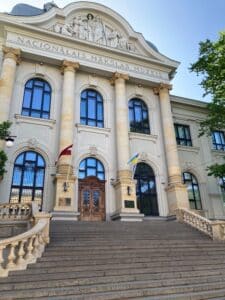
The museum’s collection can be traced back to the collection of a wealthy doctor named Nikolai Himsel who displayed the collection as part of what came to be known by 1773 as the Himsel Museum. Much of this collection was eventually absorbed into the collection of the Riga City Council who expanded it with other acquisitions and displayed art as part of the Riga City Art Gallery, which opened in 1863.
These establishments had no permanent home prior to the current building’s construction in 1905. The stately and elegant Neo-Baroque building facing Krišjāņa Valdemāra iela was the first structure purpose-built to be an art museum in the Baltics.
Under the direction of the Riga City Museum of Art and the Riga Society of Art Promotion, the building was designed by German architect Wllhelm Neumann and completed in 1905.
Beginning in 1918, following the Russian revolution, Latvia enjoyed twenty years of independence. It was at this time that the museum began to focus on acquiring and displaying national art.
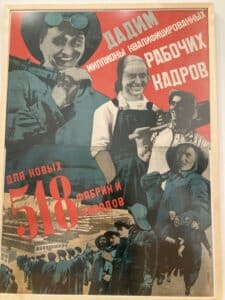
After the Soviets retook Latvia in 1940, the museum was allowed to partially maintain its focus on Latvian national art as the State Museum of Latvian and Russian Art. This is also when the Museum’s sprawling structure began as the Soviets nationalized and consolidated museums under larger and larger directorates.
In 1989, under glastnost and perestroika, the museum subtly declared its independence from Russia by renaming itself “The State Museum of Art,” dropping any mention of nationality. It has been known as the Latvian National Museum of Art since 1995.
In 2016, the museum completed a €29 million renovation that doubled the museum’s size, using funding sources from the Riga City Council and the European Union. In 2018, it received a nomination for the European Museum Award.
The museum continues actively seeking to improve and expand its collection. In 2021, over 300 artworks were purchased, including 160 paintings, the largest procurement since Latvia’s independence.
Visiting The Latvian National Museum of Art in 2023
The Latvian National Museum of Art is located in central Riga as part of the city’s Esplanade Park ensemble. It is just a 10-minute walk from the classrooms of Liden and Denz, where SRAS programs in Riga are hosted.
As of the time of writing, a full price ticket could be purchased for just €6 (~$6.50), with student tickets available at a 50% discount. Free admission is available on the last Sunday of every month. Guided tours can be booked in advance in English or Russian for €15.
Visitors can also download the museum’s app to access audioguide material free of charge on Google Play or the App Store. A QR code and free museum Wifi allow you to access this upon arrival. The Highlights Tour (available in English, Latvian, and Ukrainian) will lead you through the museum’s permanent collections, which are all located on the third floor. As of writing, the app contains 2-3 minute audio clips describing 23 different pieces of art from 1824-1934. The descriptions are well-written and give a good introduction of the features of major artistic movements, as well as guiding the viewer through the details of the art piece in front of them. While one of the voices on the English guide has a thick accent, the other voice is very clear and even the accent is not a huge barrier to understanding.
The permanent exhibitions at the main building are divided into three parts: Latvian Art 1780-1915, Latvian Art 1915-1940, and Latvian Modernists in Russian in the 1920s and 30s.
While the museum’s priority is showcasing Latvian artists and the Latvian experience, the museum does not ignore the large role that exchange with other, larger urban centers throughout Western Europe and Russia played in the development of these artists and their styles. Through this cross-pollination, the art showcases in microcosm the complicated history of occupation, independence, national pride, and cosmopolitanism that has led to Latvia’s (and especially Riga’s) vibrant and multidimensional culture.
The focus on a smaller range of artists also allows for a more biographical look into the development and evolution of the interests of particular artists.
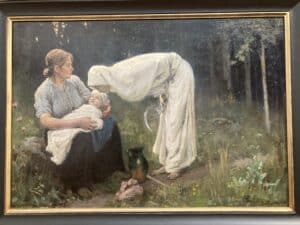
For instance, Janis Rozentāls (1866-1916) was a versatile artist whose career spanned several styles and is considered foundational for Latvian art. You can view his art school thesis work here: From the Church (After the Service) (1894) which, in its presentation of a wide swath of rural Latvia society in minute, individualized detail, fits into the national realist tradition. The museum’s app gives an accounting of the artist’s use of real-life models. You cannot help but notice Rozentāls’ Death (1897), which personifies death in the figure of a white-robed female grim reaper, leaning over an infant and her grieving mother. Later in the gallery, you’ll find works more inspired and informed by the Art Nouveau tradition, such as Arcadia (1910) and The Princess and the Monkey (1913). A visitor paying less attention might not notice these works were conceived by the same painter. Also, don’t miss the statue of Rozentāls from 1936, which stands next to the museum building.
Another good example of an artist overviewed by the museum in Vilhelms Purvītis (1872-1945). Purvītis is one of the most significant figures in Latvian art. After receiving his education in the St. Petersburg Art Academy, he traveled and exhibited in Tallinn, Paris, Lyon, Germany, Oslo (where he studied techniques for painting snow). Purvītis later directed the Riga Art Museum (which would later become the LNMA) and Art Academy. He is best known for his landscapes, which are nothing short of arresting, and the museum’s collection displays (and provides guides for) no less than seven of them, spanning a period from the turn of the century until 1934. We see in his work the native Latvian countryside through the flux of the seasons: bare winter trees reflected on icy water, the sheen of melting snow, the candy-colored bursts of spring blossoms. You can see more landscape work by Purvītis in the third floor lobby, alongside work by Estonian artist Gerhard von Rosen.
The modernist rooms showcase Latvian artists’ reactions to the violent upheavals of World War I and the Bolshevik Revolution in Russia. Latvian artists remained on the cutting edge of the art movements that rapidly developed at this time, as can be seen in the works of pioneering artists like Gustav Klutsis in his constructivist works like The Dynamic City (1919).
In addition to the permanent collection, the LNMM has multiple exhibition rooms to accommodate temporary displays, located on both the second and the fourth floors. At the time of my visit (Summer 2023, during the ongoing war in Ukraine), these exhibitions were dedicated to pieces of post-1945 and contemporary pieces of Latvian art. At this time, there is a particular thematic emphasis on independence, freedom of expression, and suffocation and suffering under Soviet rule. Many exhibits give visitors the chance to learn about contemporary, working Latvian artists, and art enthusiasts will not be disappointed.
The audio guide also features a type of tour which I have never seen in any art museum anywhere else. The “Route of Wellbeing” coaches the viewer through a mindful walk through the museum’s temporary exhibitions, asking the viewer to concentrate on their own feelings and reactions to the pieces. Presumably, this narration remains the same even as the temporary exhibitions change. The “Route of Wellbeing” is available in English and Latvian, and would be a great way for a visitor who may think that they don’t really “get art” to experience the museum.
At time of writing, one of the temporary exhibits also had audioguide QR codes posted next to some of the pieces, which seemed to be hosted in Soundcloud, but I had some trouble with the functionality. This may have only been available in Latvian.
More information about the building itself can be found in the “Explore the Museum Building” section on the LNMM app, which guides visitors through the building and, in written text, describes the building’s history and features.
Location and Nearby
A visit to this museum works well as part of a pleasant sojourn out of the center of the tourist-laden old city. The rear of the building abuts Riga’s Esplanade park, which also contains Riga Nativity of Christ Russian Orthodox Cathedral and the National Art Academy of Latvia. The museum is also within ten minutes’ walk of Riga’s premiere Art Nouveau district, centered around Albertas Iela and Kronvalda Park. (Don’t miss the fragment of the Berlin Wall, statues of Alexander Pushkin and Taras Shevkenko, and the displays of support and protest opposite the Ukrainian and Russian embassies on Kalpaka bulvāris). Directly facing the museum across Krišjāņa Valdemāra iela is the bookstore Novaya Riga, a haven for independent Russian voices that also doubles as a wine bar.
Exploring the Perestroika Collection at the Latvian Museum of Art, 2023
By Quin Evans
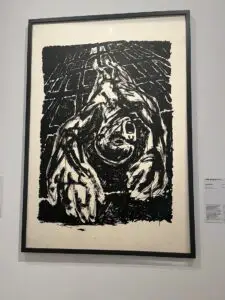
Walking into the museum, you see it is extremely well kept. It has a modern ticket kiosk in its entrance where the staff are ready to converse in English. In the bottom floor, you will find free lockers with keys, so you do not have to lug your bag or coat through the museum. The first gallery showcases art from the Perestroika era. This was my favorite part of the museum. It is very impactful and incorporates many types of media into the exhibition. Here, most of the motifs focus on critiques of Soviet power and most of the words on the art will be in Russian; placards, however, will be in English and Latvian. The second gallery focuses on work from the 1950s-70s. This is a hall with many interesting works of photography. As you go up the floors, the works tend to go back in time with the 2nd and 3rd floors covering the interwar periods. The fourth floor houses modern art in what seems to be a temporary exhibit. The 4th floor also has two beautiful terraces overlooking the city that are open during the spring, summer, and fall months. In the basement, there is the café, museum store, and a temporary exhibition space. When I was there, it was a contemporary gallery dedicated to woman artists.
There are no audio guides, but guided tours are offered in English. Almost all exhibits have an English translation. Despite the prominent place that Russian has in the works of art, it is notably absent from any museum information. This is most likely because this museum seems to be dedicated to the independent spirit of Latvia through many occupations. The art in the museum seems to be centered around the idea of demonstrating how Latvia has survived throughout its trials and tribulations in being a pawn in the game of empire. Because of this, the Perestroika era exhibits seem to be the most important and well curated.
You’ll Also Love
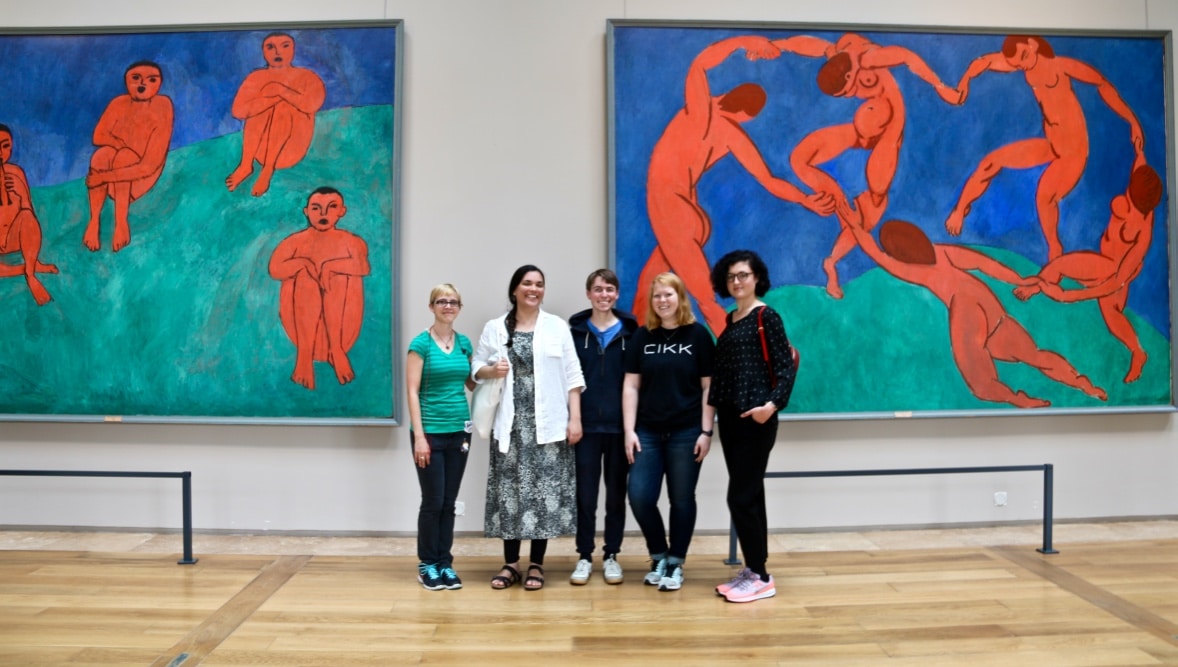
Museums as Self-Care
In 2018, doctors in Montreal began prescribing visits to the Montreal Museum of Fine Arts (MMFA) for patients experiencing depression, anxiety, and other health issues. This innovative approach to mental health treatment was launched under the initiative of the MMFA in collaboration with Médecins francophones du Canada (MFdC). The program allows physicians to provide patients […]
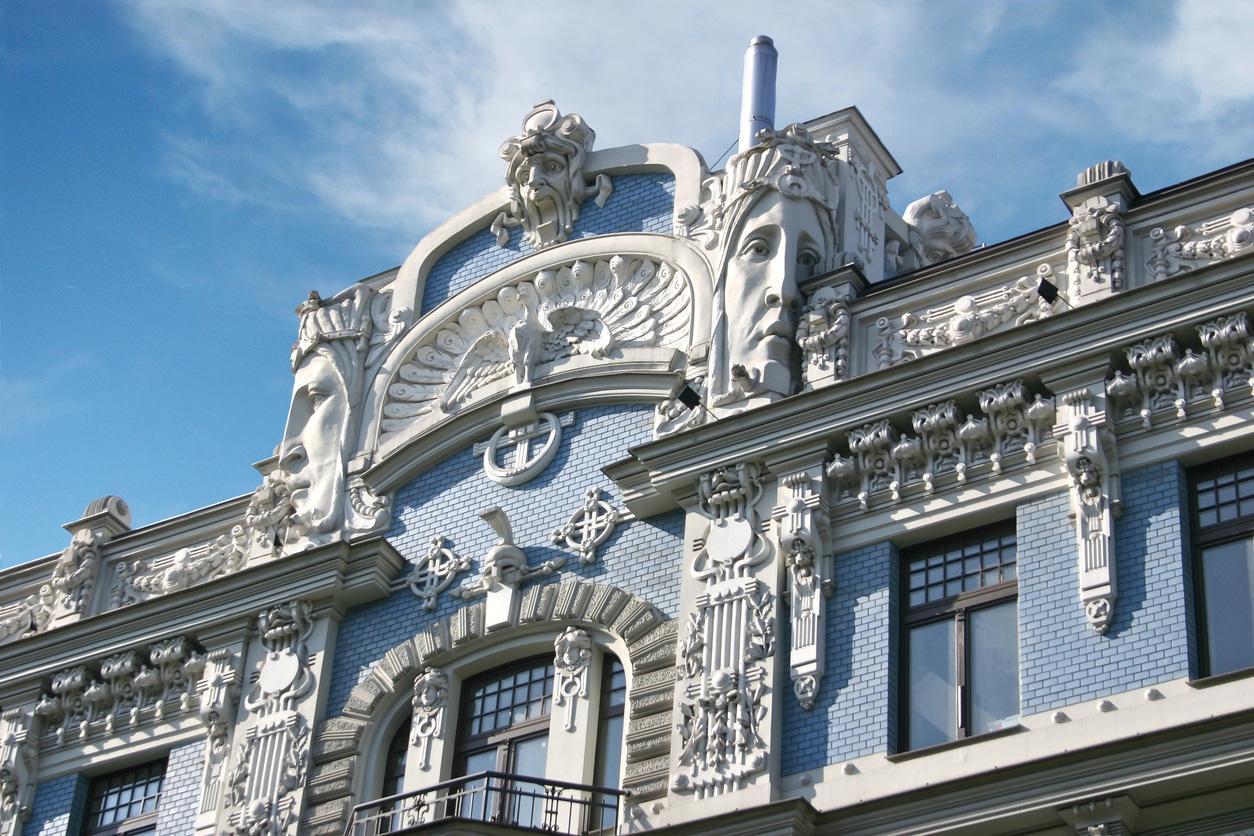
How Art Nouveau Became an Expression of Latvian Identity
Latvia’s rich Art Nouveau heritage was shaped by European trends, influenced by local folk aesthetics, and popularized under Latvia’s National Awakening, a movement that first sought to define what it meant to be proudly Latvian. Art Nouveau flourished in Latvia for less than two decades. It rose with the economic prosperity and social mobility at […]
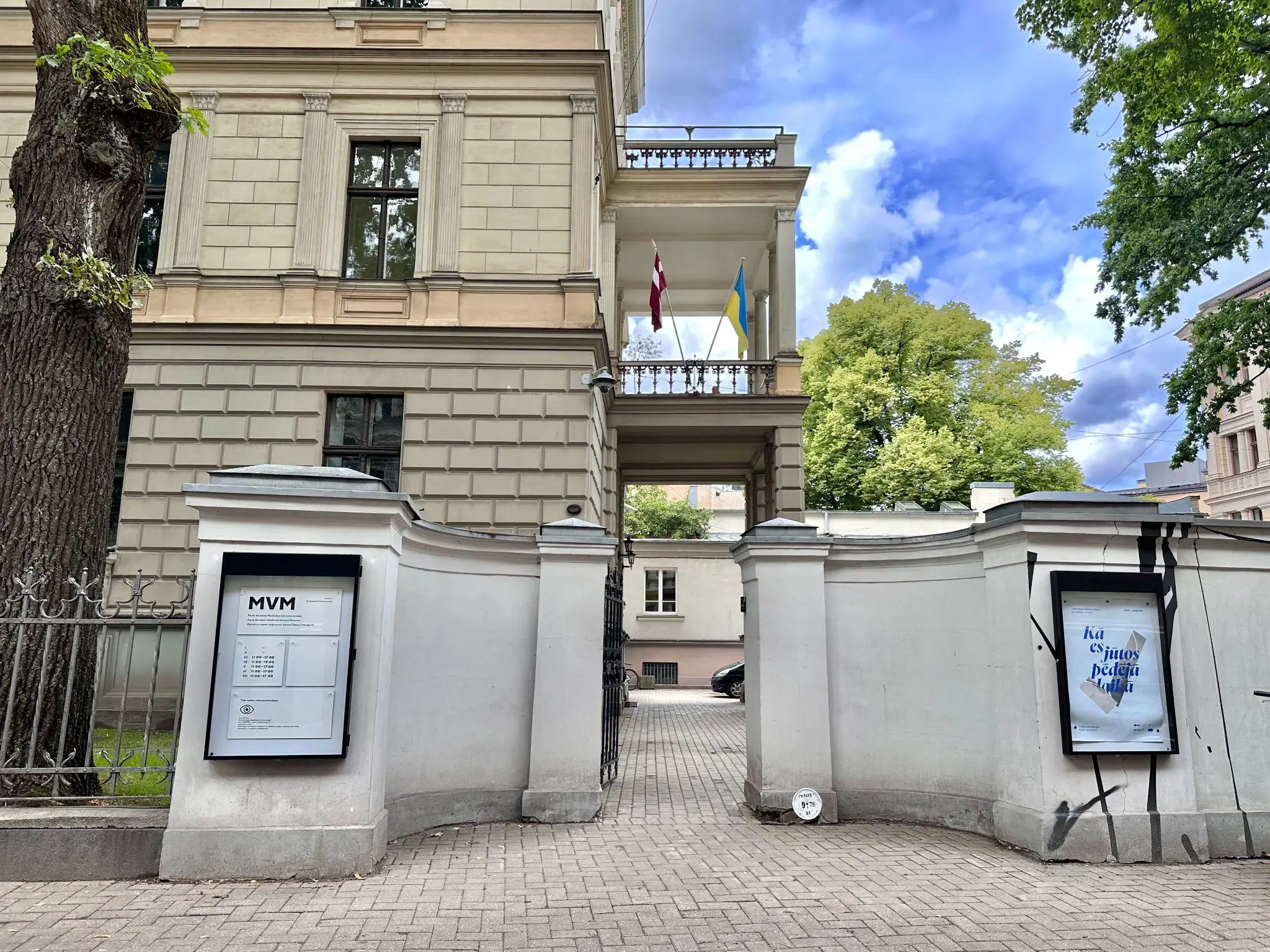
Pauls Stradiņš Museum of the History of Medicine
The Pauls Stradiņš Museum of the History of Medicine, located in Riga, Latvia, is one of the world’s largest museums devoted to healthcare and medicine. It covers the history of medicine from ancient times to the modern, with a special focus on healthcare in Latvia. The museum showcases the historical progression of medical knowledge, instruments, […]
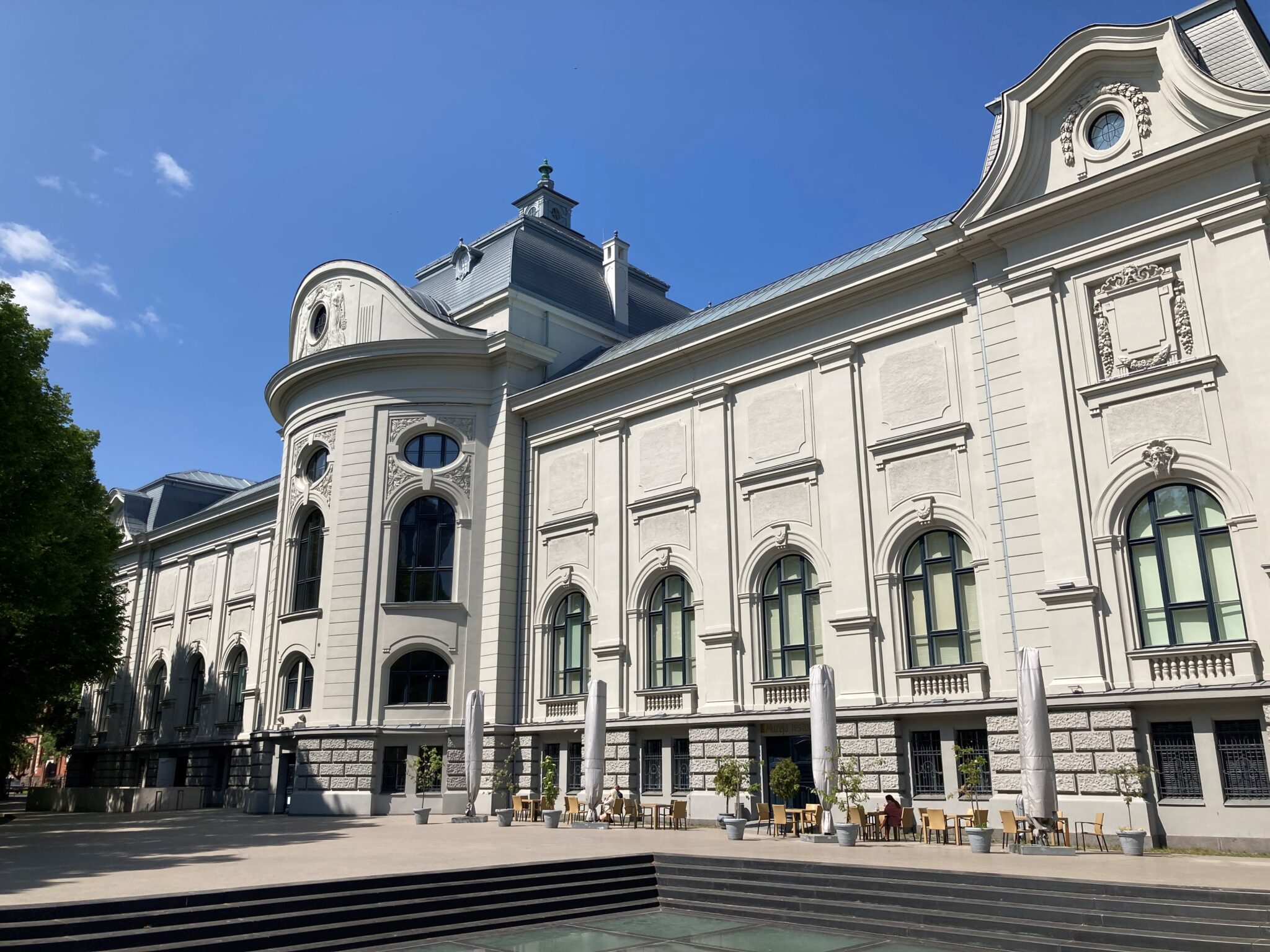
Latvian National Museum of Art
The Latvian National Museum of Art is one of Riga’s oldest and best known art museums. Its permanent collections focus specifically on Latvia’s own national artists and on telling the story of the development of art in Latvia. It also rotates temporary exhibitions that can introduce you to even more striking and more recent Latvian […]
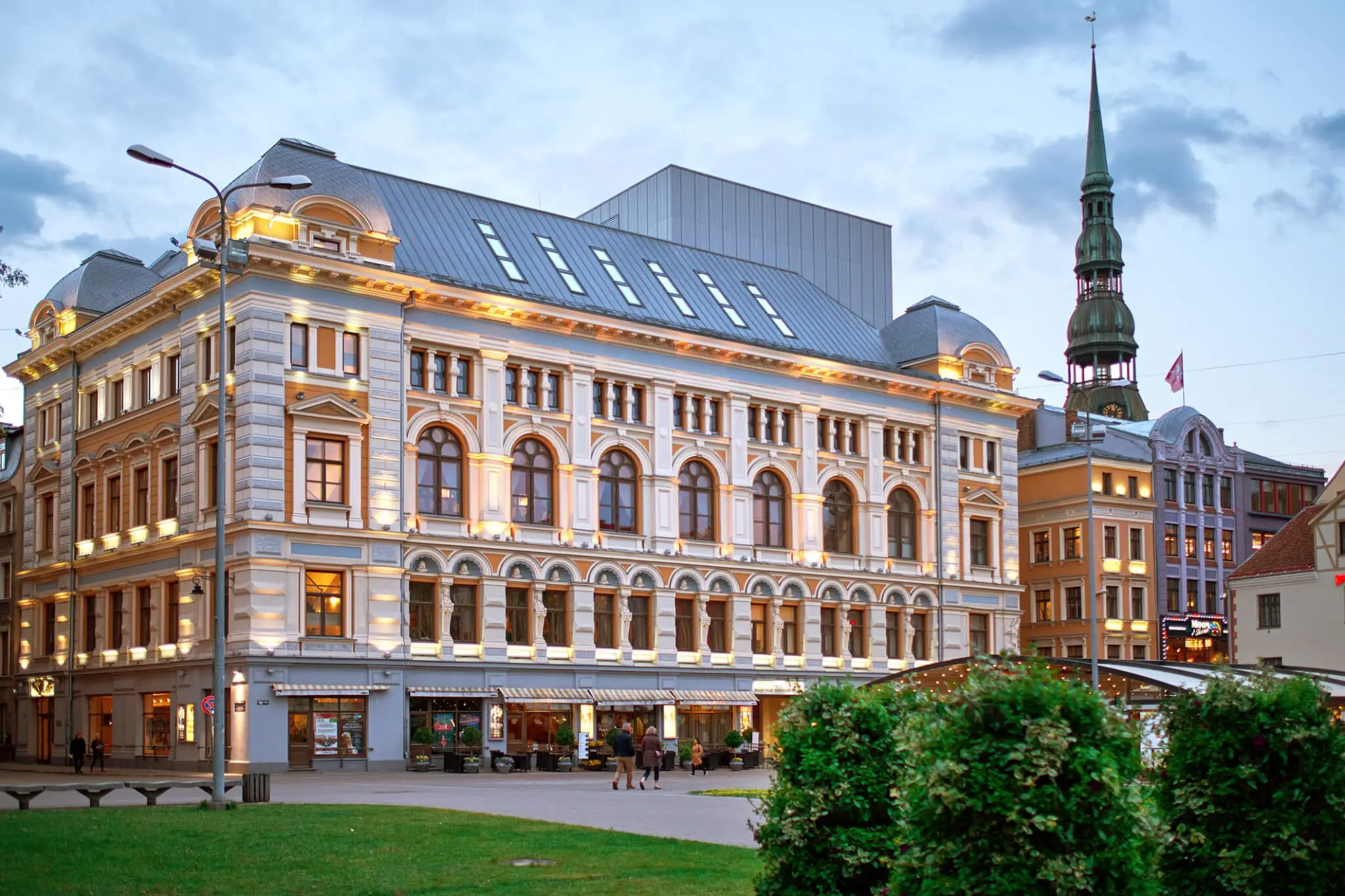
Mikhail Chekhov Riga Russian Theater
Located in the heart of Old Riga, the Mikhail Chekhov Riga Russian Theater has played a central and outsized role in the history of Russian language arts and culture in Latvia. To this day, about 25% of Latvia’s population is native Russian speaking. This theater, which, in 2023, marks 140 years since its founding, remains […]


